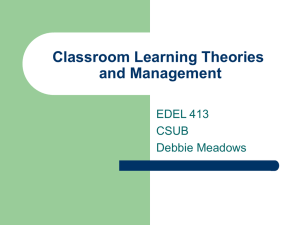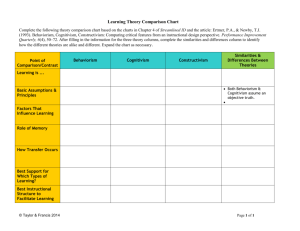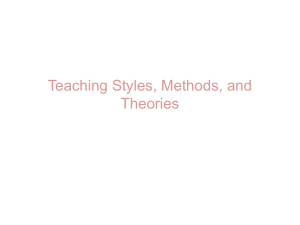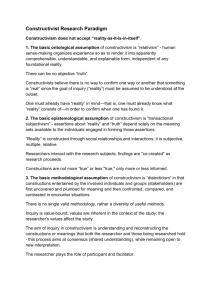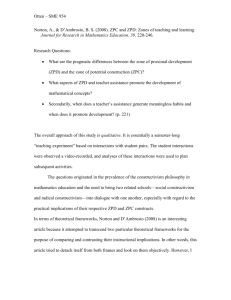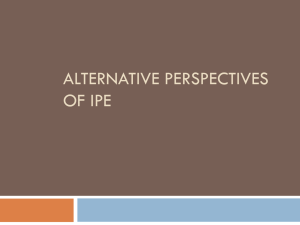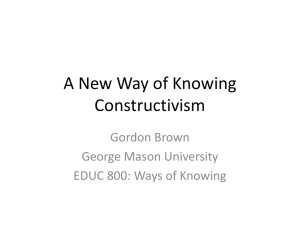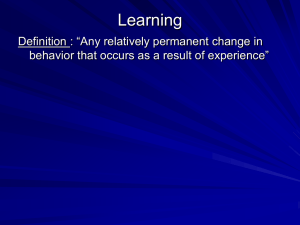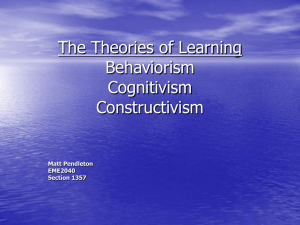Role of the Teacher - Dallas Area Network for Teaching and Education
advertisement
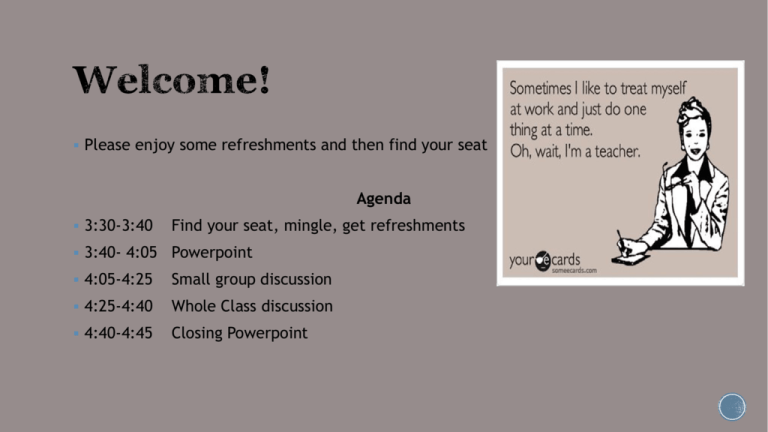
Please enjoy some refreshments and then find your seat Agenda 3:30-3:40 Find your seat, mingle, get refreshments 3:40- 4:05 Powerpoint 4:05-4:25 Small group discussion 4:25-4:40 Whole Class discussion 4:40-4:45 Closing Powerpoint Margaret W. Anita V. Elizabeth S. Brigid M. The goal of this seminar is to understand the role of the teacher in ever changing modern world. Schools wanted role models. Teachers were hired based on this and not on whether they could actually provide their students with an education that would help them be successful. Teachers were “masters” more than they were facilitators. 1772—Late 18th century "Wanted Immediately: A Sober diligent Schoolmaster capable of teaching READING, WRITING, ARITHMETICK, and the Latin TONGUE... Any Person qualified as above, and well recommended, will be put into immediate Possession of the School, on applying to the Minister of Charles Parish, York County." -- The Virginia Gazette, August 20, 1772 1820s to 1830s: The Common School Era "The grammar school teachers have rarely had any education beyond what they have acquired in the very schools where they have to teach. Their attainments, therefore, to say the least, are usually very moderate.“ -- James Carter, Education Reformer, 1826 Common Schools • More schools more teachers • Women takeover the schoolroom • Better teachers Normal Schools 1840s: Feminization Begins "God seems to have made woman peculiarly suited to guide and develop the infant mind, and it seems...very poor policy to pay a man 20 or 22 dollars a month, for teaching children the ABCs, when a female could do the work more successfully at one third of the price.“ -- Littleton School Committee, Littleton, Massachusetts, 1849 "The school committee are sentinels stationed at the door of every school house in the State, to see that no teacher crosses its threshold, who is not clothed, from the crown of his head to the sole of his foot, in garments of virtue." -- Horace Mann 1850s to 1880s: Women's Experience in the Classroom 60 children in the one-room schoolhouse Curriculum was not very demanding Women welcomed the independence teaching gave them Went from being outsiders to having a sense of purpose and wanting to pursue that purpose effectively • Began to form associations, went to summer training programs, and essentially, contributed to the transformation of their communities. • • • • Americanization • As immigration increased there was a need to Americanize foreigners. • Schools were expected to instill American customs. • Immigrant students looked to teachers as role models, exemplars of gentility and success in the new land. 1890’s to 1910’s: Women Teacher’s Rebellion • 75 % of teachers were women • But made up a small percentage of administrators • Lost their independence and flexibility in how they were to teach 1910’s to 1930’s: Progressivism "How can the child learn to be a free and responsible citizen when the teacher is bound?" -- John Dewey, Philosopher of Education, 1918 1990’s to the Present "There's really nothing more rewarding than seeing a student who has incredible potential being reborn as a good student." -- Alex White, Teacher, New York, 2000 Behaviorism Ivan Pavlov is a key person in Behaviorist thought Watch this video for more info! Famous for his behavior study on dogs. Pavlov conditioned the behavior of salivation in his dogs by simply ringing a bell! All behaviors are based on external stimuli & extrinsic motivations Behaviorism Cont… L “ earning is basically just a process of conditioning. The learner is led through a series of stimulus-responses situations which take him closer & closer to his desired goal.—Learning takes place as the bond between the stimulus & its associated response are being formed” (Chastain) Role of Teacher--Behaviorism Focus on a Teacher-centered classroom where students are taught in a controlled, structured, fixed classroom setting No integration of subjects & curriculum Behaviorists believe in having students work independently & assessing students in traditional ways Teacher needs to provide the stimulus for her students & always motivate & provide positive reinforcement How it came to to be? Dissatisfaction with traditional Western theories of knowledge. Today? Carries an enormous appeal Encouraged for teachers to practice by many reforms •An epistemology-Learning or meaning-making theory and falls under three domains: Social, Psychological, and Radical Constructivism. Radical Constructivism Ernst Von Glasersfeld Social Constructivism Lev Vygotsky Psychological Constructivism Piaget Project Follow Through (1968-1995) The Academic Achievement Challenge: What Really Works in the Classroom? (2000) William J Matthews, 2003 Facilitator Inspire Set an example Adapter Technology user “Teaching consists in assisting performance through the ZPD. Teaching can be said to occur when assistance is offered at points in ZPD at which performance requires assistance.” (pg.31) “A child’s ZPD is extended through problem solving under adult guidance or collaboration with more capable peers” (pg. 23) Knowledge of… Subject matter Students and possible misconceptions Curricula General pedagogy TPACK (Technological Pedagogical Content Knowledge) Identifies knowledge needed for teaching effectively with technology http://www.pbs.org/onlyateacher/index.html http://www.csun.edu/science/ref/pedagogy/pck/ http://www.sciencedimension.co.uk/tag/tpack/
